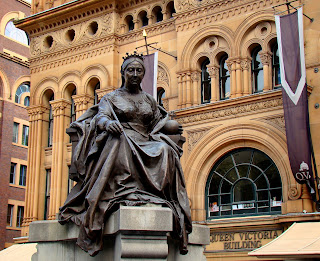It is a truism often cited that the period of 30 - 50
years after creation is the time when any artwork or building is most at risk
of being destroyed. It has lost the novelty of being new and fallen out of fashion but has not yet entered into
that hallowed world of being anointed with heritage status. Great art and
buildings tend to transcend this dangerous period, but that leaves an awful lot
of our artistic and architectural output which is vulnerable. Some of
this of course deserves a quick and timely departure, whether due to poor
design or materials that would never last.
So it is not surprising to read that Historic England, formerly part of English Heritage, have complied a list of lost, stolen, sold or destroyed public art works made anywhere between the Second World War and the 1980s. Some we know about, such as the Henry Moore bronze Reclining Figure stolen from the Henry Moore Foundation's estate in 2005 worth £3m, which was melted down and sold for £1,500 as scrap metal.
So it is not surprising to read that Historic England, formerly part of English Heritage, have complied a list of lost, stolen, sold or destroyed public art works made anywhere between the Second World War and the 1980s. Some we know about, such as the Henry Moore bronze Reclining Figure stolen from the Henry Moore Foundation's estate in 2005 worth £3m, which was melted down and sold for £1,500 as scrap metal.
Some are the victims of political correctness. Countless figures of Lenin have
been dismembered since Glasnost. And closer to home, Sydney is the beneficiary of
a fine seated figure of Queen Victoria,
which had been removed for political reasons from
Leinster House in Dublin during the Troubles and, after languishing in a council
depot in Dublin for many years, was transported to Sydney to take pride of place
outside the refurbished Queen Victoria
Building in the 1980s. A similar discussion is going
on right now about the figure of Cecil Rhodes on Oriel College, Oxford. A
current Rhodes scholar no less (talk about biting the hand that feeds you) is
leading the campaign to have his statue removed on the basis that Rhodes was
responsible for genocide.
Queen Victoria Statue, Queen Victoria Building, Sydney
Some have only just survived, Mary
Kayser's 'Dragonfly' in Canberra being a case in point. Created in 1989 (so it
doesn’t even reach 30 years before it was disdained), it was deteriorating badly, obscured behind trees and about
to be destroyed. The ACT Government commendably decided it was worthy of
saving, and we were commissioned to restore
and relocate it to a prime site on Lake Burley Griffin.
Mary Kayser's 'Dragonfly' - Obscured behind trees
Mary Kayser's 'Dragonfly' - Restored and relocated
But then of course if you want to avoid the angst as an
artist of having your creation destroyed you can do what Bert Flugelman
did and bury the art work in the first place so no one can get to it. As part
of an arts festival in Canberra in 1975,
Bert participated by burying his artwork made of six polished aluminium
tetrahedrons, remarking that if he explained why he was putting the piece
underground “the whole point would be lost”.
Now there’s both an artistic statement and a pretty foolproof way
of ensuring your legacy survives!






